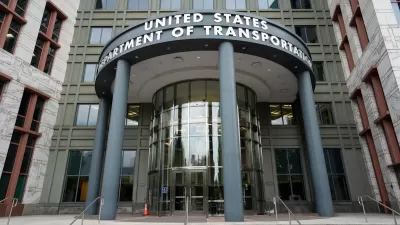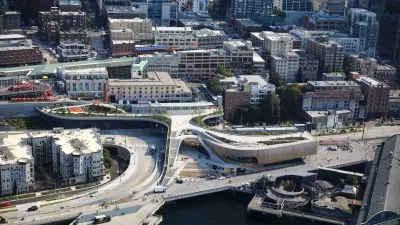Professor Glenn Lyons offers insights about the challenges facing planners in times of rapid technological, cultural, and social change, in Local Transport Today's first ‘Deep Thinking Initiative’ article.

In Looking for the Light in a Dark Age, Professor Glenn Lyons, President of the Chartered Institution of Highways & Transportation, shares his concerns and suggestions for planning in a world overwhelmed by rapid technological, cultural and social change. This is the first article in Local Transport Today's ‘Deep Thinking Initiative’ series.
Lyons describes the challenges and frustrations many planners feel:
“If I was sat 30 years ago at the start of my transport planning career and someone had described the reality of 2025 to me, it would have seemed preposterous. It would have sounded like a future in which humanity was entering another dark age - characterised by a world stumbling into an unknown and unfathomable future, governed by forces outside anyone’s real control.”
“[P]ursuing the realisation of our transport planning goals is like a Sisyphean task — we push our hopes and ambitions up the long hard slope (sometimes nearly reaching the top) only for them to roll right back down before we start all over again (albeit that perhaps, just perhaps, we’ve chipped away a little at the scale of the task).”
“I certainly wouldn’t pin my hopes on technology saving us. As other scholars have noted in the past, technology has a way of ironically being a cause of our problems that then more technology is brought in to try and solve. As Sir Colin Buchanan aptly put it in the 1960s, the motor car is a prime example of a mixed blessing. Why we might now think selfdriving cars are the wonderful gift we’ve all been waiting for, is frankly beyond me.”
But he doesn't give up. “So let us push the boulder again up the slope as transport planners, perhaps this time doubling down on how we take communities and politicians with us into the future with visions and realistically achievable actions. But can we do that? After all, the boulder is decidedly heavy. Can we afford not to?”
FULL STORY: Looking for the Light in a Dark Age

Trump Administration Could Effectively End Housing Voucher Program
Federal officials are eyeing major cuts to the Section 8 program that helps millions of low-income households pay rent.

Planetizen Federal Action Tracker
A weekly monitor of how Trump’s orders and actions are impacting planners and planning in America.

Ken Jennings Launches Transit Web Series
The Jeopardy champ wants you to ride public transit.

Crime Continues to Drop on Philly, San Francisco Transit Systems
SEPTA and BART both saw significant declines in violent crime in the first quarter of 2025.

How South LA Green Spaces Power Community Health and Hope
Green spaces like South L.A. Wetlands Park are helping South Los Angeles residents promote healthy lifestyles, build community, and advocate for improvements that reflect local needs in historically underserved neighborhoods.

Sacramento Plans ‘Quick-Build’ Road Safety Projects
The city wants to accelerate small-scale safety improvements that use low-cost equipment to make an impact at dangerous intersections.
Urban Design for Planners 1: Software Tools
This six-course series explores essential urban design concepts using open source software and equips planners with the tools they need to participate fully in the urban design process.
Planning for Universal Design
Learn the tools for implementing Universal Design in planning regulations.
Heyer Gruel & Associates PA
Ada County Highway District
Institute for Housing and Urban Development Studies (IHS)
City of Grandview
Harvard GSD Executive Education
Toledo-Lucas County Plan Commissions
Salt Lake City
NYU Wagner Graduate School of Public Service





























